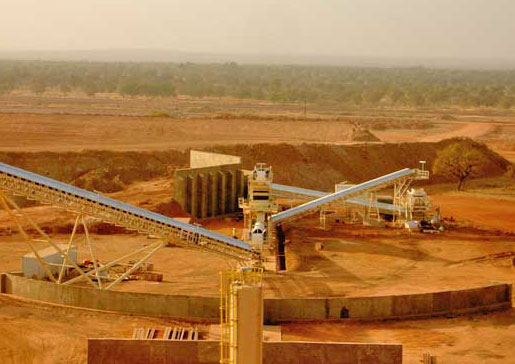VANCOUVER — When West Africa-focused Semafo (TSX: SMF; US-OTC: SEMFF) relocated most of the mining fleet to new mining ares at its flagship Mana gold mine, the company knew it would have to weather a less-productive transition period. Semafo has shifted its mining focus from the low-grade Wona-Kona mega pit to the higher grade Siou and Fofina deposits, and based on the company’s second-quarter results, the move is paying off.
Semafo produced 72,700 oz. gold in the second quarter at a cash-operating cost of US$475 per oz. This compares to only 35,100 oz. gold during the first quarter at cash costs of US$952 per oz., and 41,500 oz. at US$604 per oz. for the second quarter of 2013.
Head grades during the second quarter ended were 3.37 grams gold per tonne, which is a 75% jump over the previous period. Grades at Fofina were higher than expected due to an enriched supergene zone on surface.
“We incurred a weaker first quarter, because we elected to reward the mining sequence in order to allocate most of the Wona-Kona mining fleet to Siou and Fofina to accelerate development,” explained president and CEO Benoit Desormeaux during a conference call.
“We feel the strength of our second-quarter performance clearly validates that decision. We have that higher grade at Fofina then what we were expecting because of the supergene zone. We don’t know how long we will have that impact, but we know it’s not going to last for the remaining life of the Fofina.”
As a result quarterly gold sales jumped 63% year-on-year to US$88 million, with operating income up 124% over the same period to US$20.7 million.
Net income from operations are pegged at US$13 million, or 5¢ per share, compared to a net loss of US$12.8 million, or 5¢ per share, for the same period last year.
Semafo expects to hit the upper end of its annual production guidance despite Burkina Faso’s rainy season in the third quarter. The company is slated to produce between 200,000 and 250,000 oz. gold during the year at cash costs of between US$695 and US$745 per oz.
“We announced we would be in the upper [guidance] bracket because we’re confident,” Desormeaux said. “We’re not seeing exactly the same grade for the next two quarters, but we expect the grade to be higher than 3 grams per tonne. If we surpass that guidance it’s going to be great, and if we have to change the guidance further down the road after the rainy season we’ll do it, but we prefer to be prudent.”
Semafo is in the midst of an exploration program at Mana that will see the company spend US$18.5 million and employ four diamond drills and two reverse-circulation drills.
Initial drilling on a 15 km geochemical anomaly returned 6.45 grams gold over 4 metres in hole 14-3615 and 3.12 grams gold over 8 metres in hole 14-3724.
These two holes are 1.2 km apart.
During the second quarter Semafo entered into an agreement on another 10 exploration permits covering nearly 1,500 sq. km in the Banfora gold belt, 200 km southwest of Mana.
The company will spend US$1.5 million exploring the new area, with target areas located along a main shear zone, where there are geochemical anomalies and artisanal mining.
Drill results are anticipated in the second half of 2014.
BMO Capital Markets analyst Andrew Breichmanas downgraded his rating for Semafo to “market perform” after the news, but raised his price target by 20¢ to $5.50 per share.
“Contribution from higher-grade deposits had been anticipated for some time, but the full impact was well ahead of expectations,” Breichmanas noted on Aug. 10. “Production was above BMO Research estimates due to higher grades at Fofina, and with the anticipated operational transformation driven by processing higher-grade deposits now established, Semafo appears to have re-established the premium valuation it previously achieved from 2010 through mid-2011. Additional exploration success appears necessary to support further outperformance.”
Semafo shares have gained 44%, or $1.58 since early June, en route to a $5.17 close at press time.
The company has 277 million shares outstanding for a $1.4-billion market capitalization.
It had US$93.2 million in cash at the end of the second quarter.


Be the first to comment on "Semafo benefits from high-grade pits at Mana"